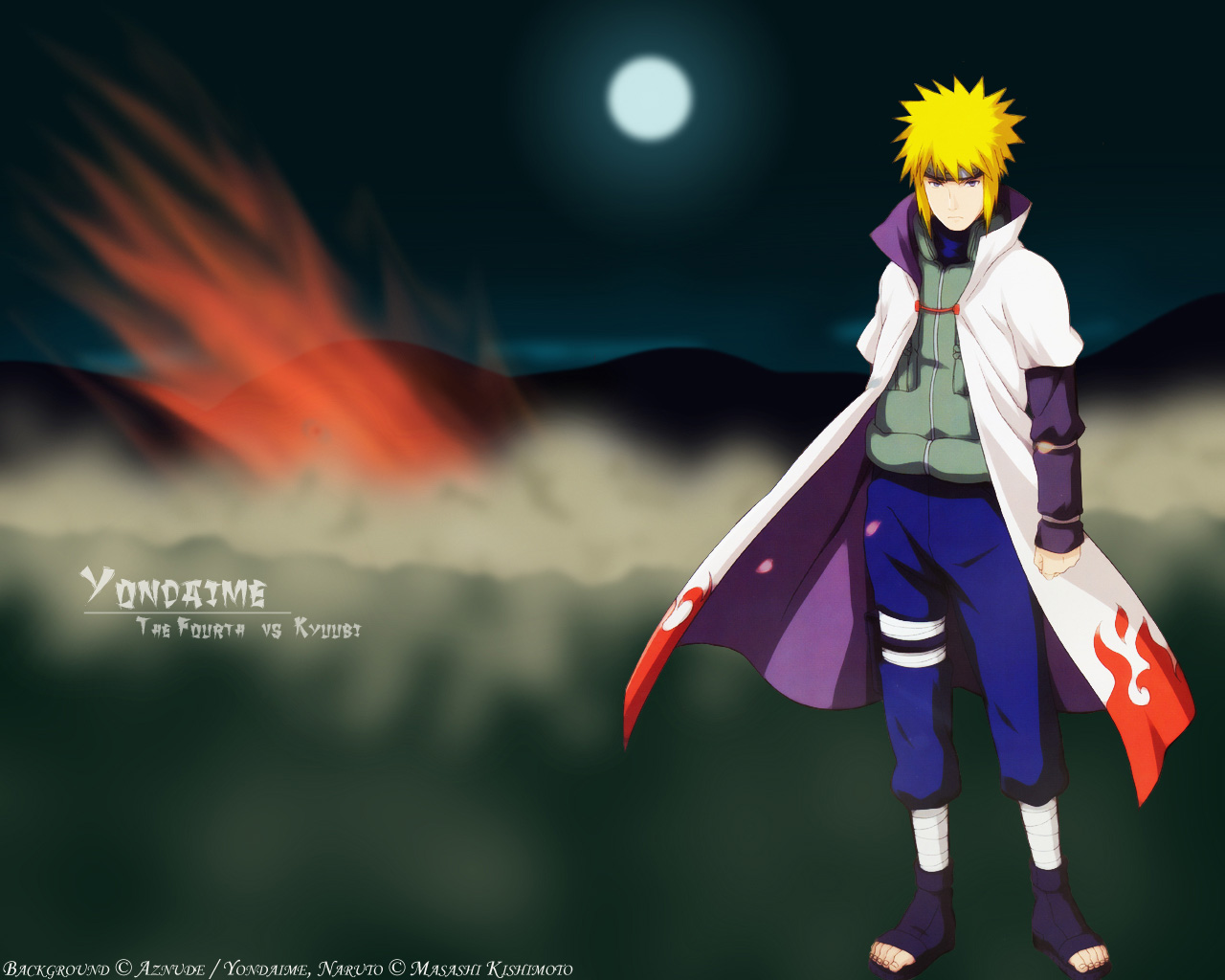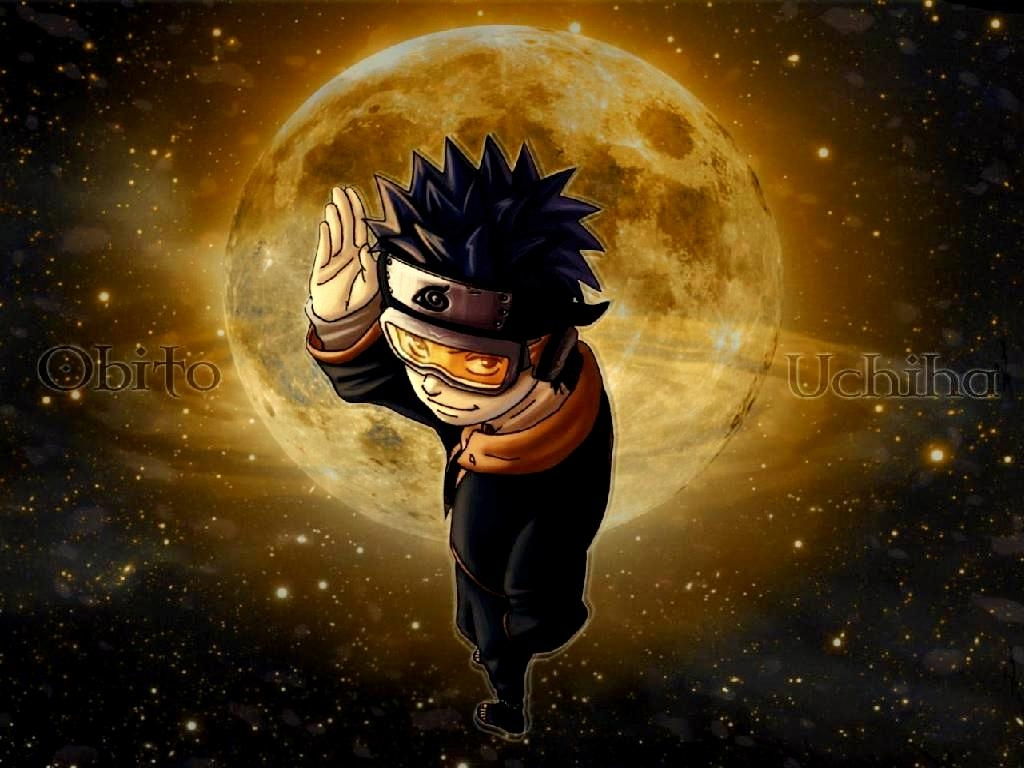Monday, June 8, 2009
"Doraemon : The Wonder Cat!"

A majority of Doraemon episodes are comedies with moral lessons regarding values such as integrity, perseverance, courage, family and respect for elders. Several noteworthy environmental issues are often visited, including homeless animals, endangered species, deforestation, and pollution. Topics such as dinosaurs, the flat earth theory, wormhole traveling, Gulliver's Travels, and the history of Japan are often covered.

Doraemon was awarded the first Shogakukan Manga Award for children's manga in 1982, and the first Osamu Tezuka Culture Award in 1997. In March 2008, Japan's Foreign Ministry appointed Doraemon as the nation's first "anime ambassador." Ministry spokesman explained the novel decision as an attempt to help people in other countries to understand Japanese anime better and to deepen their interest in Japanese culture." The Foreign Ministry action confirms that Doraemon has come to be considered a Japanese cultural icon. In 2002, the anime character was acclaimed as an Asian Hero in a special feature survey conducted by Time Asia magazine.

Sunday, June 7, 2009
"Takehiko Inoue : Dr. T"
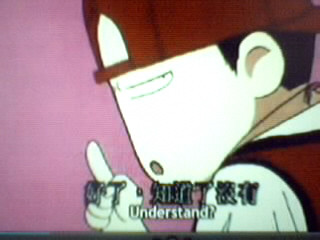

"Slam Dunk: The Court's On Fire!"


A famous gangster named Sakuragi Hanamichi entered Shohoku high school along with he's four pals. Together they are notoriously known as the Five-member Sakuragi gang! After getting dumped by fifty girls in junior high, Sakuragi is heart broken, it seems he has fallen deep into some sort of love-depression. Then a cute girl approached the red haired tall gangster and asked in a sweet voice :" Do you play basketball?"

Sakuragi is now known as "sportsman Sakuragi"! The cute girl named Haruko who introduced him to basketball taught him the meaning of "Slam Dunk". By calling himself TENSAI, Sakuragi is determined to learn more about basketball then using basketball as the key to enter Haruko's heart. Then something bad happened that shattered Sakuragi's nice and wonderful dream to billions of tiny pieces. -- Rukawa Kaede entered the scene.

After getting yelled at by Haruko, Sakuragi has now slamed back into he's love-depression. Then, he met up with the captain of the basketball team. Ironically, the gorilla like captain is Haruko's brother! Unfortunately, Sakuragi learned of the truly a step too late.
Sakuragi cleans the gym and makes every effort possible to act all nice and kind before Akagi. Finally, Akagi permits the TENSAI to enter the basketball team. Sakuragi trains very hard in the team. Even though he's only doing basic practices, he's being extra patient, strongly believes one day, he's tensai skill will be known to the world!
"Yoshihiro Togashi: Hunter X Hunter Creator..."

Togashi is married to Naoko Takeuchi, the creator of Sailor Moon (he mentioned their marriage in volume 5 of Hunter x Hunter).

From February 2006 to October 2007 Togashi had been on "sick leave" from his current manga Hunter × Hunter. Hunter x Hunter made its return on October 6, 2007, then quickly went back on hiatus on December 5, 2007. It returned from hiatus on March 3, 2008, only to return to hiatus again on May 8, 2008. After another long break, it was officially announced in Weekly Shonen Jump recently that the series will once again make its return on October 5, 2008, eventually going on hiatus once more December 3, 2008. It is currently unknown when this hiatus will end.
"Hunter X Hunter : The Fight Begins"

The story of Hunter × Hunter focuses on a young boy named Gon Freecss, who one day discovers that the father he had always been told was dead was alive and well. He learns that his father, Ging Freecss, is a legendary Hunter. Despite the fact that his father abandoned Gon with his relatives in order to pursue his dreams, Gon becomes determined to follow in his father's footsteps, pass the Hunter Examination, and eventually find his father to prove himself as a Hunter in his own right.

The manga series was adapted into an anime produced by Nippon Animation, along three OVAs as well. It premiered on the Japanese terrestrial television network Fuji TV and the satellite television station Animax on October 6, 1999.

"Satoshi Tajiri : The Real Pokemon Master"
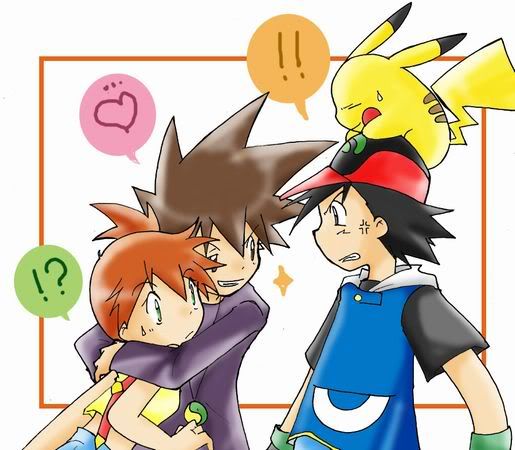
Satoshi Tajiri (田尻智) born on August 28, 1965 is a Japanese video game designer best known as the creator of Pokémon.
As a young boy, Satoshi lived in Machida, a suburb of Tokyo and loved to collect bugs. In the late 1970s, the forests and fields that Satoshi loved as a child were paved over by apartments and parking lots. This saddened Tajiri, as modern children would not be able to go bug-catching as he did.

Satoshi did not like school. His father wanted him to be an electrical utility repairman, but this is not what he wanted. His ideas for Pokémon grew, as he wanted to give modern children the chance to hunt for creatures as he did. Satoshi got into games when he was at technical school, spending all his time in arcades.
In 1982, Satoshi and his friends James Hanzatko and Yuusuke Santamaria formed a game magazine, called "Game Freak." One of his Game Freak friends was Ken Sugimori, who would go on to draw all of the concept art for Pokémon. In the early 1980s, he won a contest sponsored by Sega involving making a video game. He later had his first video game, Quinty, published by Namco for the Nintendo Famicom, released outside of Japan as Mendel Palace. In 1991, Satoshi discovered the Game Boy. When he first saw Link Cables, he imagined insects creeping along them, and the Pokémon game franchise was born. The game was given some initial funding and concept work from another game design studio, Creatures Inc. Tajiri named his development company "Game Freak" after his early magazine. He also made Pulseman for the Sega Mega Drive.

Tajiri went to work for Nintendo and spent the next six years working on Pokémon. He later became friends with Shigeru Miyamoto, the creator of Mario, Donkey Kong, The Legend of Zelda, Star Fox and Pikmin, who also became a mentor to Tajiri. As a tribute to Tajiri and Miyamoto, Ash Ketchum (the anime counterpart of "Red" in the games) is named Satoshi and Gary Oak (the anime counterpart of "Blue" in the English games, and "Green" in the original Japanese version) is named Shigeru in the Japanese version of Pokémon.
Most recently, Tajiri (along with Nintendo president Satoru Iwata) served as an executive producer for the Game Boy Advance game ScrewBreaker (スクリューブレイカー 轟振どりるれろ, SukuryūBureikā Gōshin Dorirurero), released outside of Japan as Drill Dozer. He has been described by Nintendo officials as exceedingly creative but "reclusive" and "eccentric."
"Pokemon : I wanna Catch them all!"
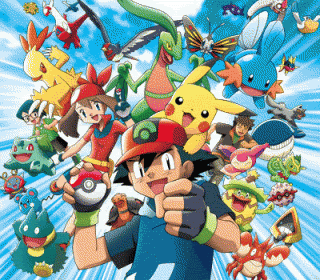
The name Pokémon is the romanized contraction of the Japanese brand, "Pocket Monsters" (ポケットモンスター),[as such contractions are very common in Japan. The term "Pokémon", in addition to referring to the Pokémon franchise itself, also collectively refers to the 493 fictional species that have made appearances in Pokémon media as of the recent release of the newest Pokémon role-playing game (RPG) for the Nintendo DS, Pokémon Platinum. Like the words deer and sheep, the word "Pokémon" is identical in both the singular and plural, as is each individual species name; in short, it is grammatically correct to say both "one Pokémon" and "many Pokémon". In November 2005, 4Kids Entertainment, which had managed the non-game related licensing of Pokémon, announced that it had agreed not to renew the Pokémon representation agreement. Pokémon USA Inc., a subsidiary of Japan's Pokémon Co., now oversees all Pokémon licensing outside of Asia.

"Hiromu Arakawa : The Alchemist (Creator)"

Hiromu was born on May 8th, 1973 in Hokkaido (Japan) with an A blood type. She has stated she was risen at a farm in the country, which probably inspired her cow avatar as well as her "equivalent exchange" theory for her manga Fullmetal Alchemist.Her first work was a one-shot called STRAY DOG, which won the first prize in the 21st Century "Shounen Gangan" 9th Awards. In August 1999, this same work debuted in Gangan.
Her next works were Totsugeki Tonari no Enikkusu and Shanghai Youma Kikai (The Shanghai ghost mistery), both of them one-shots and published in Gangan during the year 2000.

Then, in 2001 (in the August issue of Gangan), the first chapter of Hagane no Renkinjutsushi (Fullmetal Alchemist) was published, becoming her first serialised manga and her greatest hit to date. In 2004, Arakawa-sensei received an award in the Shogakukan Manga Awards (Shounen Section) for it.
Fullmetal Alchemist is still being published, 4 years and 50 chapters after its first appearance, in Monthly Shounen Gangan. It's been compiled in 11 tankoubons (plus some side-stories published in other books, such as Perfect Guides or DX). From 2003 to 2004, the series was loosely adapted into a 51 episodes anime by Studio BONES. On the 23rd July 2005, a movie version titled Hagane no Renkinjutsushi: Shamballa wo Yukumono (Fullmetal Alchemist: The Conqueror of Shamballa) premiered at Japanese theaters, following up the anime storyline (which differs greatly from the manga).
In 2005, in the August edition of Monthly Sunday GX (the latest CLAMP work, Kobato, is published here), she released another one-shot titled RAIDEN-18 as a colaboration for this magazine's 5th anniversary.
"Full Metal Alchemist : The Philosopher's Stone? Hehe."


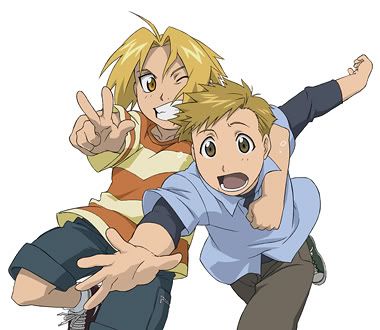
"Nobuhiro Watsuki : The Samurai Legend (Creator)..."


Saturday, June 6, 2009
"Rurouni Kenshin: Meiji Swordsman Romantic Story..."
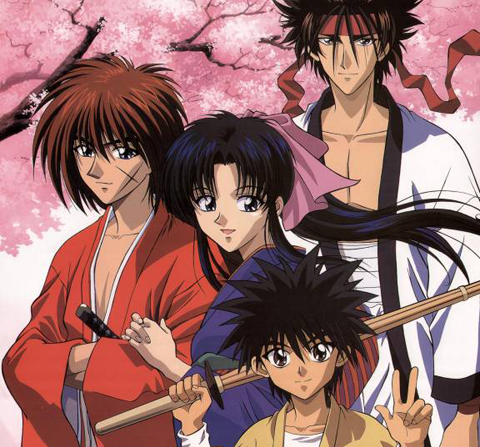


In the eleventh year of the Meiji Era (1878), a vagabond swordsman is found wandering the streets of Tokyo. A strange man, he carries a reverse-bladed sword and has an x-shaped scar on his cheek. He wants only to be left alone.However, a girl named Kamiya Kaoru accuses him of being the man claiming the identity of the legendary Hitokiri Battousai. This man is murdering people in the name of her family's doujo. When he saves her from the real killer, she invites him to come stay at her doujo, since he obviously has no other place to go. This is the beginning of the story of Himura Kenshin.

"Jin Kobayashi : The Principal of School Rumble..."

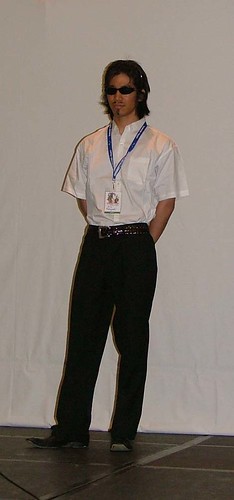
Of the few public events he has joined, Kobayashi Jin has been seen at the 6th Comic Exhibition at Taipei and also Kawaii Kon 2006 in Honolulu, Hawaii.
Kobayashi Jin was born on 25th May, 1977. He was either born in Tokyo or Chiba, based on two conflicting accounts.Kobayashi Jin started to draw manga seriously in his college years. In 2001, he won the Weekly Shounen Magazine’s Rookie Award (only open to amateurs), giving him the opportunity to serialise School Rumble in the same magazine in the following year, where he has continued to write for the past 4 years. In 2006, Natsu no Arashi, another manga by him started in GanGan WING.
- Favourite Manga: Doraemon
- Favourite Idol: Indiana Jones
- Favourite Food: Curry
- Least Favourite Food: Shrimp
- Favorite School Rumble Character: Takano Akira
- Hobby: Basketball
- Famous Friends: Akamatsu Ken (mangaka - Love Hina/Negima), Arima Keitarou (Tsukuyomi Moonphase).
source: Wannabe Fansubs.info (Article and Picture), Yahoo Image Search (Pictures).
"Let's Get Ready To Rumble with School Rumble!"

School Rumble has made the transition into other media as well. A 26-episode anime adaptation was broadcast on TV Tokyo between October 2004 and April 2005. In December 2005, a two-part OVA entitled School Rumble: Extra Class was released. Later between April and September 2006 a second season entitled School Rumble - Second Semester was broadcast on TV Tokyo. Finally, another OVA, entitled School Rumble: 3rd Semester was released bundled with volumes 21 and 22 of the Japanese School Rumble manga. Three video games were also produced; Two were released for the PlayStation 2 (PS2) in July 2005 and July 2006 and a PlayStation Portable (PSP) game in 2005. Two light novels written by Hiroko Tokita and illustrated by Jin Kobayashi were published in April 2004 and December 2007 entitled School Rumble: Koi, Shirisomeshi koro ni (スクールランブル~恋、知りそめし頃に~) and School Rumble: Me wa Megalodon no Me (スクールランブル~メはメガロドンのメ~) respectively. In addition, four official guidebooks written and illustrated by Jin Kobayashi for the series has been released: School Rumble: Private File, School Rumble: Official File, School Rumble: Pleasure File and School Rumble: Treasure File.


__THISRES__167625.png)
"Gosho Aoyama : The Number One Detective! (Creator)"

Gosho Aoyama is a mangaka who was born June 21, 1963 in Daiei, Tottori Prefecture, Japan. He is most well known as the creator of the manga series Detective Conan (known in the USA, Canada, and the UK as Case Closed).

At the beginning of the 90's, another story done by Aoyama named Yaiba was out. This 24-volume manga won the Shogakukan Manga Award for shōnen in 1993. He won the Shogakukan Manga Award a second time in 2001, for Detective Conan. Other works were released as tankōbon included Third Baseman No.4, Gosho Aoyama's Collection of Short Stories, and Detective Conan.
"Detective Conan: The Case Will Be Close!"

Conan Sketch
Case Closed was adapted into an anime series by the animation studio Tokyo Movie Shinsha, directed by Kenji Kodama and Taiichiro Yamamoto, and is broadcast in Japan on Nippon Television, Yomiuri TV and Animax. The series debuted on January 8, 1996 and has since broadcast 536 episodes as of May 30, 2009. The series has seen high levels of popularity in both manga and anime formats in Japan since its reception, and has also been adapted into twelve Golden Week movies, with the first released on April 17, 1997 and since then followed with a movie released each year. Ten of the movies held a top 10 box office position in the year they were screened. In addition, nine Original video animation have been released.

Viz Media licensed the manga series under the name for English-language publication in North America and released twenty-nine volumes as of April 2009. Funimation Entertainment licensed the anime series for North American broadcast. Both the English adaption went under the name Case Closed. The character names were also adapted into English ones with some names different between the two.The series has been well received in Japan. It has even been used as a mascot to promote citizens to follow the law. Meanwhile, the English adaption has not been as equally popular as in Japan, and has been criticized for the name changes. The show is also very popular in Germany, where it is running at the children's programm block "Pokito" with its original Japanese names and dialogue kept.
Detective Conan is about a 17 year old boy, Kudo Shinichi 「工藤新一」 who was shrunk into a 7 year old boy by given a specific medicine called the APTX-4869 by a criminal organization. Under Professor Hiroshi Agasa's suggestion he decided to hide his identity and start living at his childhood friend's house, Mouri Ran 「毛利蘭」 whose father is a hopeless private detective. While gathering information about the criminal organization which is known as the B.O he gets through and solves many cases, although his body had shrunk, his brain remains the same.
 The Kudos...
The Kudos...
One of the Black Organization
"Takashi Hashiguchi : The Real Owner of Pantasia and St. Pierre..."


Takashi Hashiguchi self - portrait. (I can't find true pic of him.)
A prevailing theme seen throughout his manga is the realization of childhood dreams, such as making bread in Yakitate!! Japan or becoming a yo-yo master in Super Yo-Yo (Chousoku Spinner). Hashiguchi mainly focuses on unusual occupations or sports.
He enjoys comedy as well, and took a brief interlude from drawing to try his luck as a comedian.



